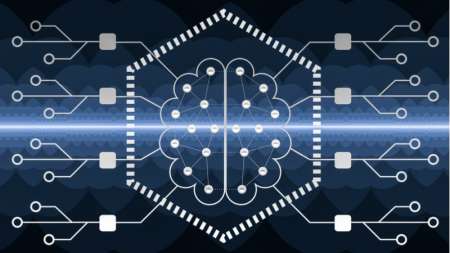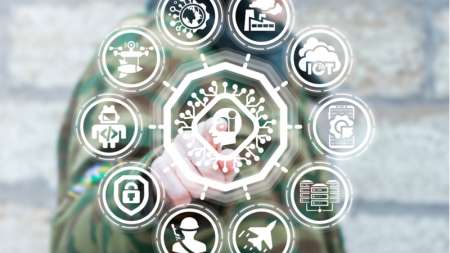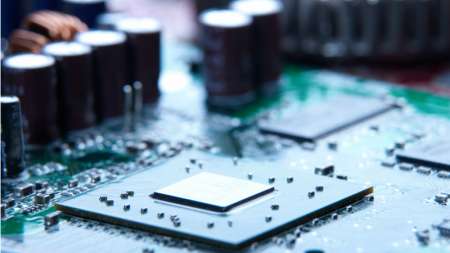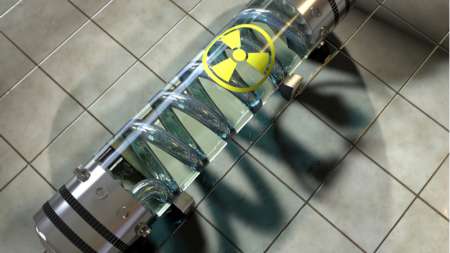The Pentagon wants to make ordering up a space launch as easy as hailing an Uber. […]
In a scene from the movie “The Matrix,” Carrie Anne Moss’ character calls to get a flight program for a certain kind of helicopter, and after a few blinks of the eyes, the program is installed in her brain and she’s ready to roll. The Pentagon’s lead research arm isn’t quite at that point yet, […]
Artificial intelligence (AI) machines can out-think humans when it comes to a lot of complex, fine-grained tasks, such as detecting signs of cancer more accurately than doctors can, or finding exoplanets based on “dimming effect” data from distant solar systems. But what they don’t have is good old common sense, the ability to apply its knowledge, and the experience to various tasks humans can do from childhood. […]
The Navy is taking software development, particularly with regard to maritime cybersecurity, artificial intelligence, and development operations, out to sea. […]
In the quest to keep the upper hand in the burgeoning field of artificial intelligence (AI), the Pentagon’s top research arm just put $2 billion in chips on the table to spur development of the third wave of AI technologies. […]
The Defense Advanced Research Projects Agency (DARPA) kicked off its new ‘AI Next’ campaign with a multi-year commitment to spend more than $2 billion on new and existing artificial intelligence programs to help create machines that can adapt to changing situations. […]
The idea that you can’t trust everything you see on the Internet is a conventional, if sporadically followed, wisdom. But as hackers become increasingly skilled and sneaky, as “fake news” officially enters the dictionary, and as fake video and fake audio become more of a thing, you might not necessarily be paranoid to wonder if you can trust anything. […]
The Pentagon is looking to get into the weeds with cyber defense, using artificial intelligence to hunt down attacks that may use the size and complexity of its systems to hide out while waiting to strike. […]
The Pentagon is looking to get on top of the next wave of artificial intelligence technologies through a fast-track contracting program that would bring new concepts from the drawing board to proof-of-concept within 18 months. […]
The Pentagon’s top research arm is sponsoring development of a first-of-its-kind software that can model the events that contribute to conflicts around the world, and, if not quite predict the future, at least offer a timely heads-up on what might happen next. […]
The accelerating cycle of technological advancements is reaching down into even small components that traditionally operated on low power and computational capacity, while performing a narrow, specific function. […]
Artificial intelligence has been applied to everything from cybersecurity and financial management to human resources and self-driving cars, so it seemed only a matter of time before it could take over video surveillance duties. And while AI, machine learning, and neural networks have made some promising strides in this area, it’s not quite the slam dunk that it might seem. […]
The Department of Defense (DoD) caused a slight disturbance in the Force the other day when it pulled back an announcement related to its cloud computing initiative over some Star Wars-related acronyms. The memo announced the creation of the Central Cloud Computing Program Office, which would go by the acronym C3PO, and would support the Joint Enterprise Defense Infrastructure (JEDI) Cloud, Bloomberg reported. The memo was scrubbed of the Star Wars references and reissued. […]
North Korea’s persistent efforts on nuclear weapons development and some loose talk about red buttons have raised new fears internationally about the possibilities of nuclear conflict. At home, government agencies also are addressing the questions about what to do in the case of a nuclear detonation. The Centers for Disease Control and Prevention (CDC), for example, will hold one of its Public Health Grand Round teaching sessions Jan. 16 on how medical professionals should respond–and although the event has been planned for months, it’s timing suddenly seems to be on the mark. […]
Turning that job over to robotic systems is the idea behind the Defense Advanced Research Projects Agency’s (DARPA) latest competition, the Subterranean Challenge. DARPA is inviting teams from around the world to develop new ways of mapping, navigating, and searching underground environments, and is offering $2.75 million in prize money to the eventual winners. […]
In a data scientist’s dreams, the Internet of Things (IoT) would cover the Earth. And in fact, that dream might not be that far off–ground-based sensors, unmanned vehicles, mobile devices of all kinds, and satellites already combine to offer a pretty clear picture of what’s going on around us, and the resolution is only going to improve. […]
In light of recent advances in performance–not to mention the history of computing–it’s reasonable to assume that artificial intelligence and machine learning systems will become smarter and faster. But government-funded research that is being put into practice at the Air Force Research Laboratory (AFRL) could achieve new levels of performance while also consuming minimal amounts of power. […]
The Defense Department (DoD) is leading the brain-computer interface charge within government, recently investing $65 million across six projects. Each of these projects will work to develop high-resolution neural interfaces and working systems that could help in sensory restoration, specifically in these projects with regard to sight and speech. The contractors–five research organizations and one private company–will work under the Defense Advanced Research Project Agency’s (DARPA) Neural Engineering System Design (NESD) program, which was launched in 2016 with the goal of developing an implantable neural interface able to deliver high-bandwidth data transfers between the brain and electronics systems. […]
The Department of Defense (DoD) is cooking up big plans for blockchain technology, the digital ledger best known for its support of cryptocurrencies such as Bitcoin and Ethereum. The technology’s decentralized, encrypted approach holds promise for a variety of secure functions in addition to financial transactions, from cyber defense and distributed communications to protecting the digital supply chains used by deployed forces for 3D printing. A Navy officer on the Naval Innovation Advisory Council has written that blockchain could “revolutionize” the way military operations over the next decade. […]
A team at the Georgia Institute of Technology, backed by the Defense Department’s research arm, is developing tool that will give cybersecurity investigators that kind of look at a cyber intrusion, quickly providing layers of detail not currently available, in what researchers say is the first instance of automated forensics. […]
Congress wants the Defense Department (DoD) to elaborate on its growing interest is blockchain technology, the secure digital ledger system that can be applied not only to protect financial transactions, but also many other operations such as defending against cyberattacks, protecting logistics supply chains, and securing communications with aircraft and satellites. […]
Machine learning and artificial intelligence are needed to bridge the gap between the volume of government intelligence data and the number of people capable of analyzing it, according to Jason Matheny, director of the Intelligence Advanced Research Project Activity (IARPA). […]
A military-funded technology that can influence the emotional centers in a person’s brain is ready to receive its first human test subjects. The device, a deep brain stimulator, was created as part of the Department of Defense’s Systems-Based Neurotechnology for Emerging Therapies (SUBNETS) program. […]
Government employees who attended the hacking conventions of the past had a pretty hard time remaining unnoticed, as many hosted “Spot the Fed” games that rewarded attendees for outing Federal employees. Today’s hacking conventions, like Black Hat and Defcon that took place earlier this month, are creating a much more collaborative environment. […]
Secretary of Defense Ash Carter announced a significant expansion of the Pentagon’s Silicon Valley-based experimental technology unit, including dedicated funding pipelines, a new partnership leadership structure, and plans to stand up a second unit in Boston. […]























